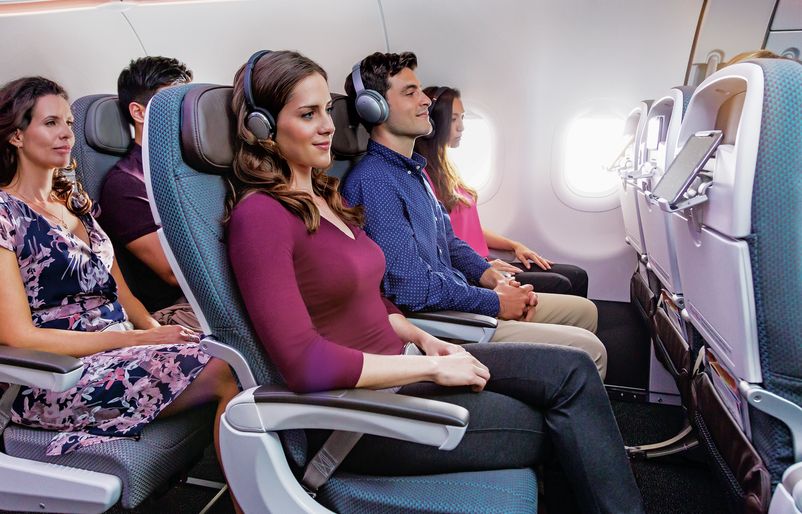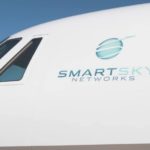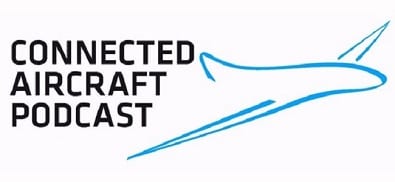
SpaceX Enters In-flight Connectivity Services Market with Hawaiian, JSX Deals

SpaceX made its official entry into the in-flight connectivity (IFC) service provider marketplace this month, with JSX and Hawaiian Airlines subsequently announcing deals to use the company’s Starlink satellites on their aircraft.
Starlink is a constellation of satellites in Low-Earth Orbit (LEO) that provides broadband internet service in areas where terrestrial options are too expensive, unreliable, or unavailable. At the beginning of 2022, Via Satellite reported that Starlink serves more than 145,000 users in 25 countries and regions.
“Pretty fly for a WiFi. First antenna installed and testing. Rapid deployment once certification achieved,” Alex Wilcox, CEO of JSX, tweeted on April 22 to announce the California-based public charter air carrier’s new deal with SpaceX.
The majority of routes operated by JSX are between airports located in California and southwestern destinations, with a fleet of 77 total Embraer 135s and 145s. The JSX brand is a subsidiary of private charter JetSuite, and it focuses on providing short-haul flights at prices that compete with commercial airline business cabin fares. The company previously had committed to becoming the launch customer for the SmartSky Networks IFC service.
Jonathan Hofeller, who serves as vice president of SpaceX, has also discussed the company’s plans for in-flight connectivity services in several public appearances over the last year.
During a virtual appearance on a Connected Aviation Intelligence panel discussion about LEO satellite IFC for aviation services, Hofeller said the company has developed its own IFC terminal that leverages its phased array consumer antenna for aviation.
“High-speed, low-latency internet is critical in our modern age, and during air travel is no exception,” Hofeller said in a statement, commenting on the JSX agreement. “With Starlink, we’re able to provide an internet experience similar to or better than what passengers experience at home. We are creating a future that when all customers walk on to the plane, the internet just works – no hassles, no logins. By being the first air carrier to adopt Starlink, JSX is setting this new standard for air travel.”
Several days after the JSX announcement, Hawaiian Airlines unveiled its own new agreement with SpaceX to add Starlink connectivity to its fleet of Airbus A330 and A321neo aircraft, as well as the Boeing 787-9s it currently has on order.
Hawaiian’s fleet of Boeing 717s that operate shorter inter-island flights will not be equipped with Starlink IFC terminals. According to the airline’s 2021 annual report filing, Hawaiian’s in-service fleet consists of 24 total A330-200s and 18 A321neos, with 10 total 787-9s on order under a 2018 purchase agreement with Boeing.
Peter Ingram, CEO of Hawaiian Airlines, discussed the Starlink agreement during the company’s first quarter earnings call, held on April 26, noting that the Starlink IFC speeds will “support fast web browsing and streaming that we’ve gotten used to on our devices on the ground.”
Ingram expects aircraft modifications for the new service to begin next year, and will have more details about when the first Starlink IFC-equipped passenger carrying flight will occur later this year. “We will be deploying it with a simple interface and free of charge to all our guests for however many devices they are accessing on board. We have deliberately trailed the industry in deploying in-flight connectivity because current and previous generations of products perform below our standards over the Pacific, where most of our time in-flight is spent,” he said. “Until now there was no offering that provided a superior product to match the rest of our in-flight experience. Starlink changes this, and we think our guests will be delighted when they have the chance to experience it.”

SmartSky Networks Partners with Mosaic ATM, Expanding Skytelligence
 SmartSky’s Skytelligence platform for in-flight connectivity applications now counts Mosaic ATM as a partner, adding new data streams, data processing and fusion techniques.
The partnership with Mosaic ATM enhances Skytelligence’s framework infrastructure connecting aviation applications and services developers, expanding the capabilities of the platform and allowing for the development of applications that integrate more data sources.
SmartSky’s Skytelligence platform for in-flight connectivity applications now counts Mosaic ATM as a partner, adding new data streams, data processing and fusion techniques.
The partnership with Mosaic ATM enhances Skytelligence’s framework infrastructure connecting aviation applications and services developers, expanding the capabilities of the platform and allowing for the development of applications that integrate more data sources.
 |
Want to hear more on aircraft connectivity applications? Check out the Global Connected Aircraft Podcast, where Avionics editor-in-chief Woodrow Bellamy III interviews airlines on how they’re applying connectivity solutions. |

New Analytics, Antenna and Cable Technology at AIX 2019
Avionics manufacturers and aircraft connectivity service providers are responding to airlines’ demands for faster connection speeds, more flexible architectures and aircraft data analytics platforms at the 2019 Aircraft Interiors Expo (AIX) 2019 in Hamburg, Germany. Here are some of the newest connected aircraft technologies and components that made their public debut on the second day of AIX. Panasonic Unveils ‘Insights’ Data Analytics Panasonic unveiled the latest component of its NEXT platform: a cloud-based analytics solution that harvests data from onboard and third-party sources from a wide range of touchpoints, including entertainment, connectivity, social media, location and weather monitors. It analyzes this data to help airlines improve the onboard passenger experience, pre-emp maintenance needs and drive revenue. Airlines will also have access to seasonal and temporal trends data through Insights, with the ability to benchmark their performance against industry averages and KPIs. Insights will be accessible via a secure dashboard on mobile devices. It has two components: A Software-as-a-Service (SaaS) application and Consulting. The SaaS component offers the data and insights described above while the Consulting piece offers airlines tailored solutions for specifics challenges. Consulting will also release monthly trends reports based on Panasonic’s global data, available by monthly subscription. “Airlines today have access to more data points than ever before, and Panasonic’s Insights solution takes all the leg-work out of analyzing and leveraging that data,” said David Bartlett, chief technology officer of Panasonic Avionics Corporation. “By fully integrating Insights across every aspect of their passenger experience, airlines will be able to use the information it delivers to optimize their passenger experience and business performance,” he added. “It is solutions like this that will enable airlines to remain competitive in the saturated market place and continue to grow their market share.” Insights will be available in the second half of 2019, according to Panasonic. Viasat’s Second-Generation Hybrid Ku/Ka-band System Viasat has a new second-generation Ku-/Ka-band shipset, including a hybrid antenna and complimentary radome. The shipset will allow airlines to provide connectivity via today’s Ku- and Ka-band networks as well as prepare for the global ViaSat-3 constellation planned for launch in 2021 and 2022. “Hybrid antenna systems are not new to Viasat—we have nearly two decades of experience deploying and managing these systems,” said Don Buchman, vice president and general manager for commercial Aviation at Viasat. “Similar to the first generation, Viasat’s latest dual-band system promotes smooth transitions among multiple satellite beams across Ku- and Ka-band networks.” When flying on routes with the hybrid shipset installed, customers will have in-flight access to all Ka-band satellites currently participating in Viasat’s global network. When out of Ka-band coverage, service will switch to the Ku-band network. Once the Viasat-3 constellation is fully deployed — which the company estimates will happen in 2022 — global Ka-band coverage will be available. SmartSky Selects Gore’s Vapor-Sealed 7 Series Cable Assemblies SmartSky Networks selected Gore’s vapor-sealed 7-series for their new in-flight connectivity system that provides 4G LTE air-to-ground (ATG) connection in aircraft such as the Embraer ERJ-135 operated by JetSuiteX. The connectivity system has now received supplementary type certification for the ERJ-145. “Gore’s 7 Series is high performance and exceptionally reliable, enabling a real fit-and-forget installation to exceed our customers’ expectations now and for many years to come,” said Darren Emery, vice president for product support at SmartSky.
StandardAero Awarded SmartSky STC for Embraer Jets
StandardAero achieved the first supplemental type certificate (STC) for SmartSky’s in-flight connectivity system for an Embraer model aircraft type. Under the new STC, SmartSky’s system can be installed on the Embraer ERJ135/140/145 regional airliners and Legacy 600/650 business jets. The STC was awarded to StandardAero under its organization designation authorization from the FAA. The company is also working on additional SmartSky STCs for Embraer Legacy 450s and 500s, as well as Dassault Falcon 7X, 8X and 50EX models. “This allows a significant section of the aviation community to access SmartSky’s affordable and secure inflight connectivity solution,” says StandardAero Certification Services Director John Miedwig. SmartSky recently announced JetSuiteX as the official launch customer of its next-generation air to ground in-flight connectivity network. The company is anticipating full coverage across U.S. airspace by the end of 2019. Under the new STC, SmartSky’s system can be installed on the Embraer ERJ135/140/145 regional airliners and Legacy 600/650 business jets. The STC was awarded to StandardAero under its organization designation authorization from the FAA. The company is also working on additional SmartSky STCs for Embraer Legacy 450s and 500s, as well as Dassault Falcon 7X, 8X and 50EX models. “This allows a significant section of the aviation community to access SmartSky’s affordable and secure inflight connectivity solution,” says StandardAero Certification Services Director John Miedwig. SmartSky recently announced JetSuiteX as the official launch customer of its next-generation air to ground in-flight connectivity network. The company is anticipating full coverage across U.S. airspace by the end of 2019.








